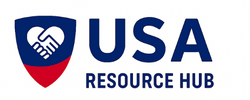Financial stress doesn’t always come with a warning. One unexpected bill, a sudden job loss, or a medical emergency can leave you scrambling to cover essentials. If you’re in that position right now, you’re not alone. Fortunately, there are federal programs designed to offer real support and some of which you may be able to access this month.
Below are ten federal programs that could help you stabilize your finances, cover basic needs, and regain control.
1. Supplemental Nutrition Assistance Program (SNAP)
SNAP helps low-income individuals and families buy groceries. Benefits are loaded onto an EBT card and can be used at most grocery stores and some farmers markets. If food insecurity is a concern, this is one of the fastest ways to get help. Applications are handled through your state’s human services department.
2. Low Income Home Energy Assistance Program (LIHEAP)
LIHEAP helps cover utility bills, especially during extreme weather. Whether you’re behind on electricity, heating, or cooling costs, this program can offer relief. Some states also provide emergency funds for households facing shutoff notices. Contact your state energy office to apply.
3. Housing Choice Voucher Program (Section 8)
Section 8 provides rent subsidies for eligible tenants in private housing. The local housing authority pays a portion of the rent, and you cover the rest based on your income. Some cities have reopened waitlists this month, so it’s worth checking availability in your area.
4. Medicaid
Medical bills shouldn’t prevent you from getting care. Medicaid offers health coverage for individuals and families with limited income. It’s accepted at many hospitals and clinics, and the application process is often simpler than expected. Eligibility varies by state, but most offer online applications.
5. Women, Infants, and Children (WIC)
WIC supports pregnant women, new mothers, and children under five. In addition to food assistance, it provides nutrition education, health referrals, and breastfeeding support. Visit your local public health office or WIC clinic to learn if you qualify.
6. Lifeline Program
Phone and internet access are essential for job searches, school, and staying connected. Lifeline offers monthly discounts on phone or broadband service for qualifying households. In some cases, you may also receive a free mobile device. Applications are available through approved service providers.
7. Temporary Assistance for Needy Families (TANF)
TANF provides monthly cash assistance to families in financial crisis. It often includes employment services, childcare support, and job training. Each state manages its own TANF program, so eligibility and benefit amounts vary. Contact your local human services office to apply.
8. Earned Income Tax Credit (EITC)
If you worked last year but earned below a certain income level, you may qualify for the EITC. This refundable tax credit can result in a significant refund—even if you don’t owe taxes. The credit amount depends on your income and family size. You can still claim it by filing a tax return, even if you missed the April deadline.
9. Free and Reduced-Price School Meals
School meal programs ensure children receive nutritious food during the day. If your household income has changed, you can update your application with the school district at any time. Some districts also offer weekend or summer meal packs for students who qualify.
10. Emergency Rental Assistance Programs
While federal funding has slowed, many states and counties still offer emergency rental assistance using leftover funds or local budgets. These programs can help cover past-due rent, future payments, and utility bills. Check with your local housing department or community action agency for current availability.
Federal programs exist to support people through tough times. Whether you’re dealing with food insecurity, housing instability, or rising utility costs, there may be help available right now.


Leave a Reply